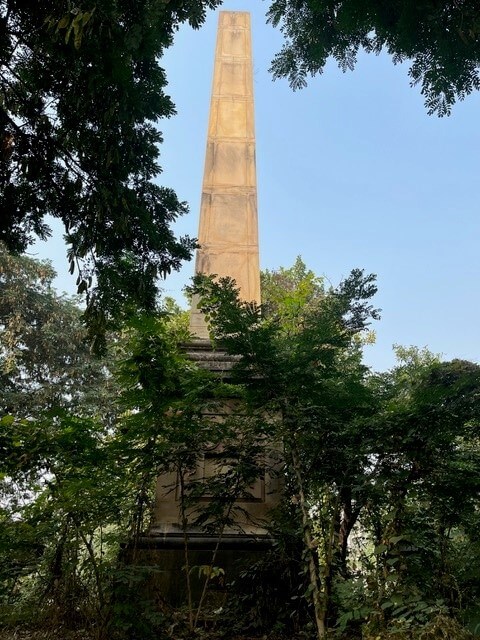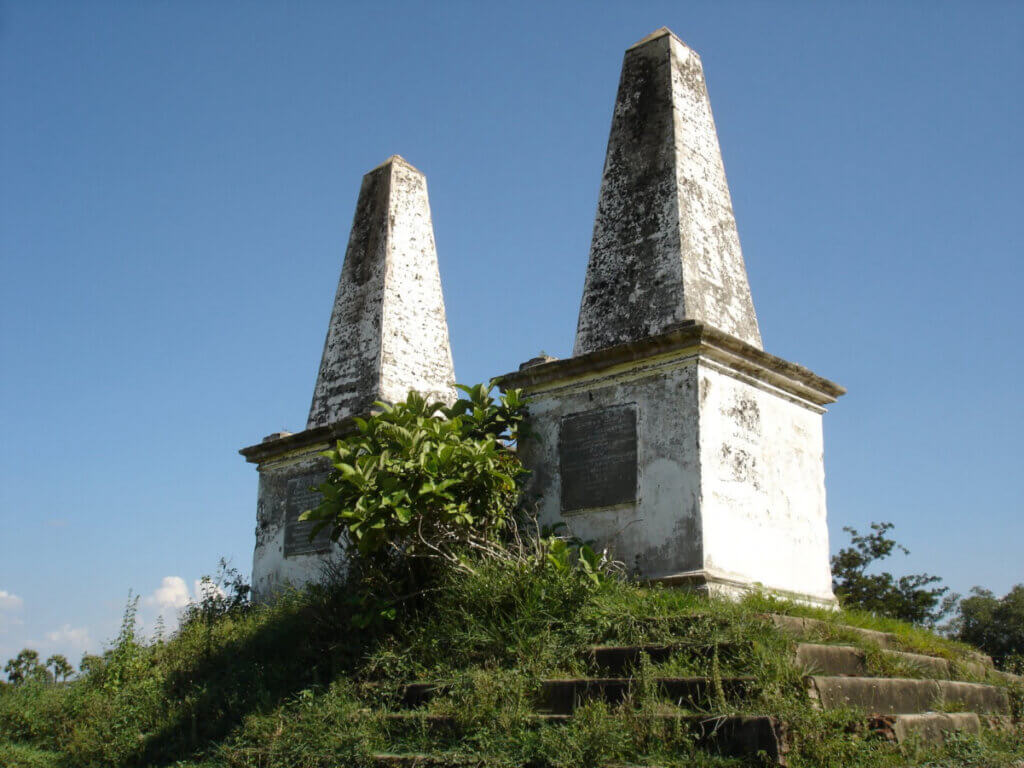By Professor Kana Tomizawa, University of Shizuoka and BACSA member.
Paper read at the Annual Conference of the Collegium Mediterraneanistrarum, 12 June 2022. Abridged text translated from the Japanese.
Obelisk-shaped tombstones, common in modern Western cemeteries, have been considered a product of the so-called ‘Egyptian Revival’, a fad in Egyptian design that arose from the development of Egyptian studies after Napoleon’s Egyptian Campaign (1789-1799). The establishment of modern cemeteries outside churches is also said to date from the 19th century. In India, however, the British had formed cemeteries long before that, and many obelisk-shaped tombstones can be found there. It is likely that obelisk tombstones appeared in India before the Egyptian Campaign.

In India we look first at the South Park Street Cemetery in Calcutta (Kolkata) founded in 1767. There we see many obelisk-shaped headstones, but we have to examine how many of them were actually erected before the impact of the Egyptian Campaign. A study of the tombstones of those who died until 1805 revealed that of the 185 tombstones in this era, 27 were obelisk-shaped, and 44 were identified where thicker or more pyramid-like ones were added.
It appears that a new modern expression concerning memorials may have been established in India prior to the European mainland. But, to confirm this, it is also necessary to review how obelisks had been associated with memorials before the 18th century. The diffusion of obelisks and their designs in the West began when a number of obelisks brought from Egypt to Rome in ancient times were later revived in the 16th-17th centuries. Seeing the development of obelisks and their designs from antiquity, especially from the 16th-17th centuries onwards, we can find some usages for memorial expressions. But, as far as the author knows, they were not free-standing obelisk-shaped tombstones but just decorative parts or flat reliefs. The author believes that the widespread use of freestanding obelisk-shaped tombstones occurred in India prior to those in Europe.
Why, then, did tombstones with this Egyptian design appear in India before Egyptology was established? We note the link between Indian funeral architecture and the English cemetery at Surat and the British playwright and architect John Vanbrugh. Architects involved in the construction of several obelisks and pyramid-like structures were active in 18th century Britain, and at the centre we find John Vanbrugh. The source of his imagery was the cemetery he had seen in Surat when a young man. In 1711, Vanbrugh presented a proposal for a cemetery consisting of ‘Lofty and Noble Mausoleums,’ modelled on the Surat Cemetery, in which obelisks and pyramid-shaped headstone can be found in the sketches. The English and Dutch cemeteries in Surat have several obelisk-shaped tombstones some of which date to the 17th century. The cemetery’s unique memorial expression shows the influence of Islamic mausoleum architecture, which flourished in India from around the 14th century, and the Hindu princely cenotaphs (chhatris) that were established around Rajasthan. The Surat cemetery influenced 18th century British architecture through Vanbrugh.
The next point of interest is the possible confusion and overlap between the imagery of obelisks and other ancient architecture. Before the establishment of Egyptology, there should have been no basis for linking obelisks with the concepts of death and rebirth, but we can find a link between obelisks and consolatory images. One of the reasons seems to be the confusion between the images of the obelisks and the pyramids. The 18th century English massacre cenotaph at Patna is sometimes referred to as an ‘obelisk’, but it is modelled on a Roman memorial column. Trajan’s Memorial Colum is a kind of tomb. The Mausoleum of Maussollos at Helicarnassus has been depicted as resembling an obelisk or pyramid, although its actual shape is unknown.

It is assumed that the obelisk tombstone form was established and developed in India as the history of complex images of obelisks and the Indian culture of funeral architecture intersected. This may have been the need for new burial sites and new expressions of memorialization due to the high mortality rate of westerners in India and the lack of churches and cemeteries, but there are many other issues to be interrogated, including the wider influence of Indian architecture and technology. This cultural phenomenon is difficult to grasp in a binary British/Indian, West/East, dominant/dominated structure, and it will be essential to gain knowledge across disciplines and regions to elucidate it. The author hopes for guidance from various researchers.
